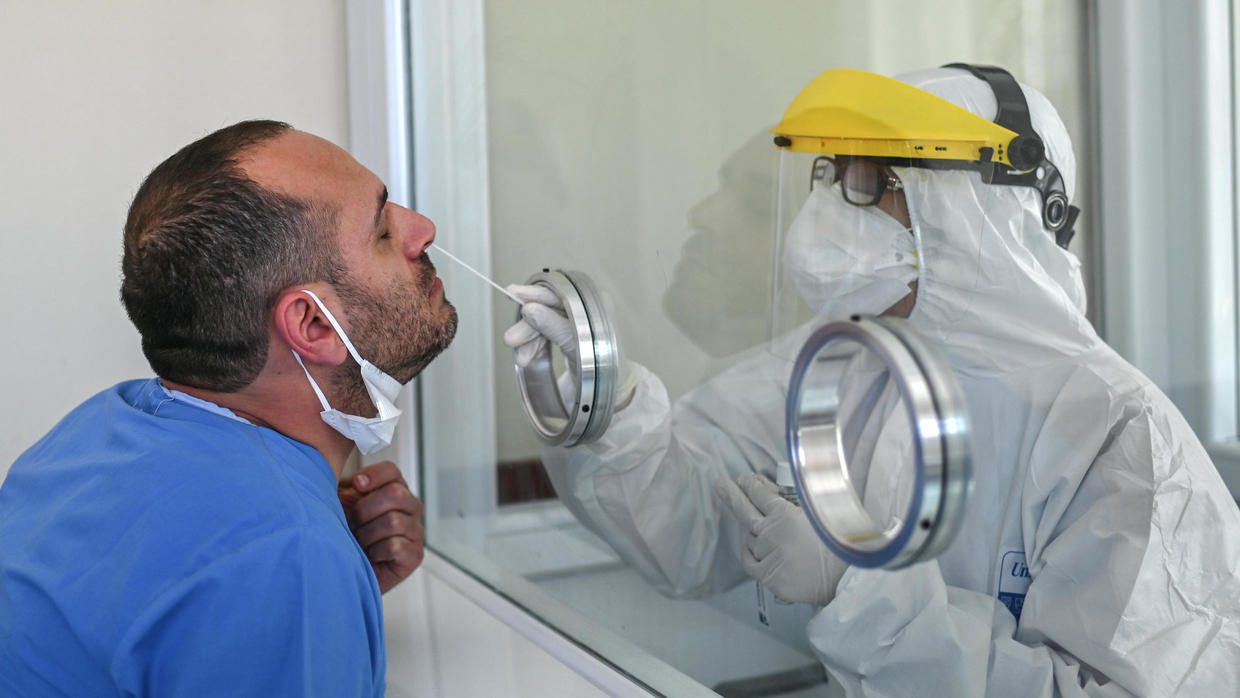The virus that causes Covid-19 can be airborne for up to four metres, according to a study of patients in hospital wards and intensive care units (ICUs) in China’s Wuhan, where it was first detected by the end of last year.
Infection rates are high among health care workers despite the use of personal protection equipment (PPE) such as gloves, masks and coveralls.
While the presence of the genetic material of the virus in the environment does not indicate it is viable (alive outside a living host) and infective, the study, published in Emerging Infectious Diseases, a journal of the US Center for Disease Control and Prevention (CDC), offers important clues on how infection spreads and how health care workers can be protected.
The RNA genetic material of Sars-CoV-2, the virus that causes Covid-19, was found suspended in the air in hospital wards and ICUs four metres away from patients, which is four times more than distance recommended for protection against infection by the World Health Organization (WHO).
The viral concentration was highest in ICUs, but it was also heavily concentrated on the floors of the wards, with “half of the samples from the soles of the ICU medical staff shoes tested positive. Therefore, the soles of medical staff shoes might function as carriers” ,said the study.
High levels of the virus were also found on frequently touched surfaces, such as door knobs, trash cans, bed rails, and the computer mouse. “Overall, we found that the air and object surfaces in Covid-19 wards were widely contaminated by Sars-CoV-2. These findings can be used to improve safety practices,” said the authors.
Reverse transcription polymerase chain reaction (RT-PCR) tests were used for nucleic acid (genetic material, which includes DNA and RNA) amplification to detect Sars-Cov-2 from environmental samples.
“Yes, (finding) RNA is not equal to a viable virus, but the study highlights the need for PPE and need for care. Good personal protection for health care workers is the key to success, else morale will be down and care will be compromised,” said Dr. Anurag Agrawal, director, Institute of Genomics & Integrative Biology, Delhi.
“RT-PCR is very effective in diagnosing viral infection, but using it to detecting RNA in the environment is not a scientific way of measuring transmission because nucleic acid traces are not indicative of virus viability. RNA by itself is not transmissible and infective. The outer wall of the virus, which is what it uses to enter human cells, gets destroyed pretty quickly from sterilisation and environment exposure,” said Dr. T Jacob John, professor emeritus and former head of virology at Christian Medical College, Vellore.
Earlier this month, a high-level US scientific panel said contended that the virus is airborne and can be stay suspended in air in the ultra fine mist that is produced when people breathe or speak, which prompted several governments, including India, to make it mandatory for everyone to wear masks in public places. The earlier guidelines said masks should only be worn by the sick, health care workers and people with symptoms of cough, fever and respiratory distress.
In a scientific brief in March 27, WHO said aerosol transmission “may be possible in specific circumstances and settings that generate aerosols”, such as when severely ill patients are intubated with a breathing tube for ventilator support, but added that an analysis of more than 75,000 coronavirus cases in China revealed no cases of airborne transmission.



































